 Yesterday I posted a video tutorial to my Instagram stories about the urgent and desperate need for masks in our American hospitals. I’ve created THIS spreadsheet for stitchers to find needs & sign up to make masks for hospitals. I’ve created THIS form for hospitals, doctors & nurses (please no private requests at this time) to make requests with the number of masks needed.
Yesterday I posted a video tutorial to my Instagram stories about the urgent and desperate need for masks in our American hospitals. I’ve created THIS spreadsheet for stitchers to find needs & sign up to make masks for hospitals. I’ve created THIS form for hospitals, doctors & nurses (please no private requests at this time) to make requests with the number of masks needed.
Last night I found out the gown shortage is just as an possibly more urgent so expect a similar tutorial for that shortly. I’m posting a photo tutorial here for what I’ve been creating. I’ve chosen to make more masks per doctor instead of including a pocket for a filter. My reasoning is that every touch of the mask risks spreading the virus. You touch your mask, then touch anything else & now the virus has spread to a new surface. It is better to not be handling these any more than absolutely necessary. I’ve included a pipe cleaner for a wire nose. Obviously, this is a crisis protocol & should not be used if you have access to the usual and approved PPE.
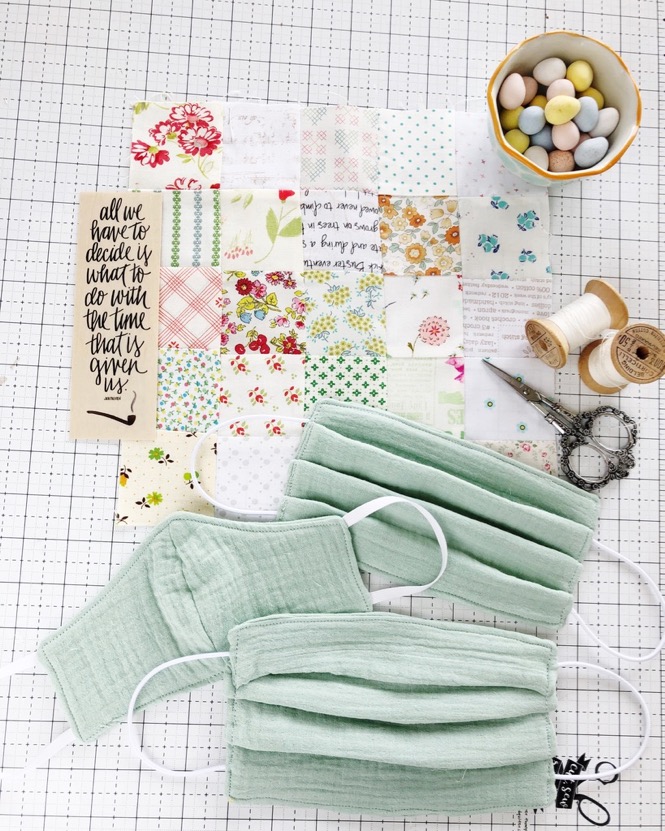
First, if you have a fever or cough, please do not proceed. We do not want to accidentally spread this virus.
I chose to use 4 layers of 100% cotton double gauze or 8 layers of actual gauze. Studies have shown this combination blocks about 95% of particulates IF there is a tight seal.
2 layers of High thread count bed sheets lined with flannel or 100% cotton t-shirt material would also work. I know many people making theirs from quilting cotton. Anything is better than an open bandanna or scarf. The other materials needed per mask are
1/4 yard of double gauze
(1) 6″ length of pipe cleaner
17″ elastic for large sized mask
Step 1: Place 2 layers of double gauze or the mask LINING on your mat. Attach the pipe cleaner to the top of the mask. I ‘wrapped’ the ends of the wire with a zig zag stitch set at .2 stitch length, then switched to stitch length 1.7 to baste down the rest of the pipe cleaner, then back to .2 for the opposite end of the wire. The wire will be on the exterior of the lining so if it rusts, it can be removed & replaced.
 Next, pin your 14″ double fold binding ties a scant 1″ down from the top & up from the bottom on each side of the lining. If using elastic, I use binding clips to hold it in place. Then place your exterior layers on top and start stitching on the bottom (the side opposite the pipe cleaners) about 2″ from the edge. Stopping to pivot at each corner with the needle down, stitch all the way around the fabric, stopping 2-3″ from the starting stitch. Clip your corners to reduce bulk.
Next, pin your 14″ double fold binding ties a scant 1″ down from the top & up from the bottom on each side of the lining. If using elastic, I use binding clips to hold it in place. Then place your exterior layers on top and start stitching on the bottom (the side opposite the pipe cleaners) about 2″ from the edge. Stopping to pivot at each corner with the needle down, stitch all the way around the fabric, stopping 2-3″ from the starting stitch. Clip your corners to reduce bulk. 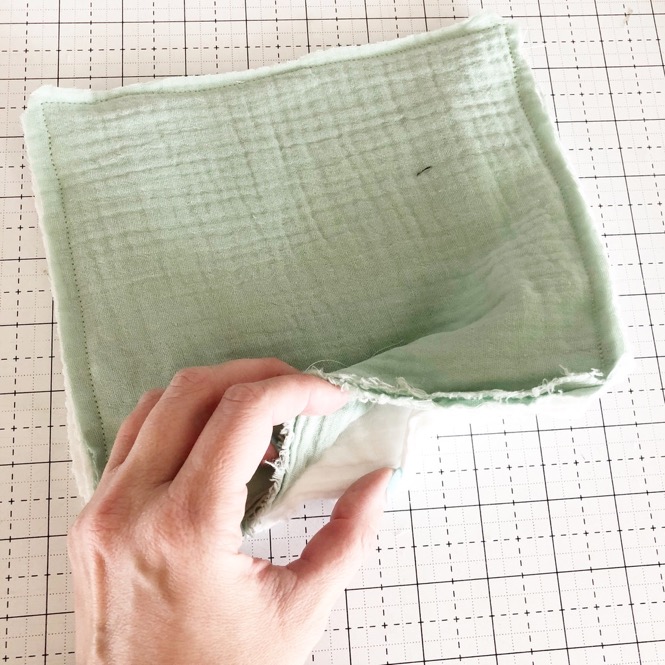
Turn your mask right side out by pulling through the opening. Press flat & pin your opening shut.
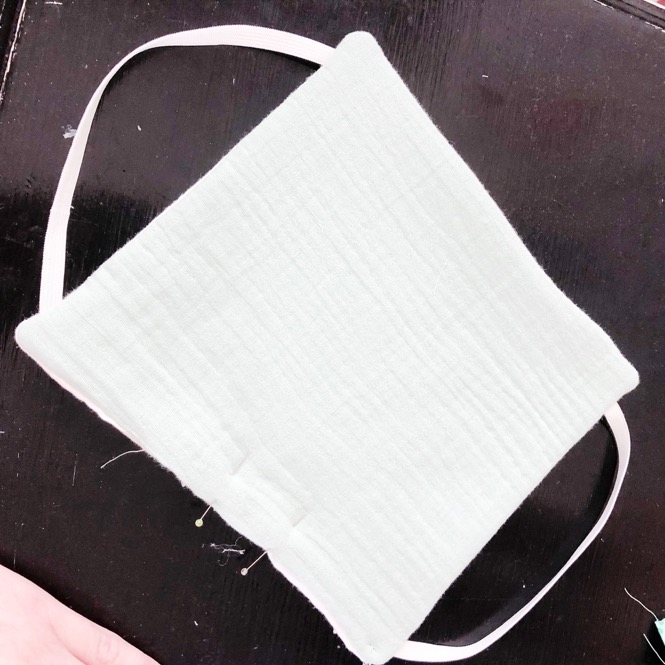
Stitch 1/8″ away from the edge all the way around the mask. Stitch ABOVE the pipe cleaner, forcing it down onto what will be the inside of the mask. The inside should NEVER be used as the outside, even after sterilization.
I like to double stitch over the elastics or ties to make sure they are secure and will survive multiple cleanings.

The pleats can be fussy. This method is quick and efficient and doesn’t require a ruler. Fold your mask in half. Pinch a half inch piece of the fabric.
Fold this piece of fabric down from the pipe cleaner side. 
After pinning the first pleat, pinch 1/2 inch below the bottom of the first pleat and fold down. Pin in place.
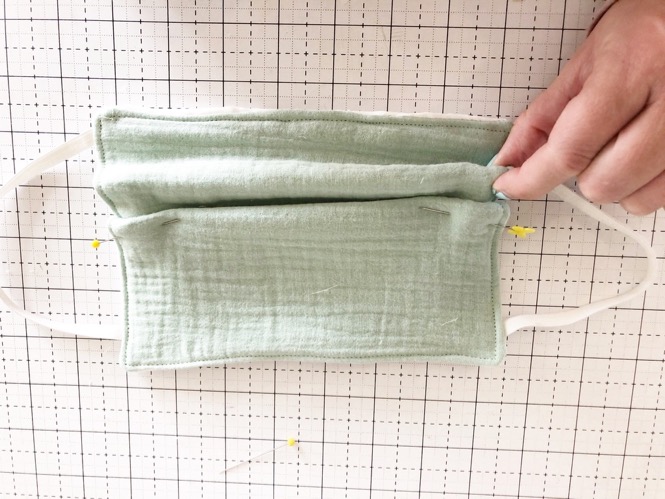 My photo is upside down and will not cooperate, so realize that the ‘top’ is actually the bottom in these photos.
My photo is upside down and will not cooperate, so realize that the ‘top’ is actually the bottom in these photos.  Using the same method, pinch and pin a 1/2 inch pleat above the middle pleat & then press all of the pleats FLAT.
Using the same method, pinch and pin a 1/2 inch pleat above the middle pleat & then press all of the pleats FLAT. 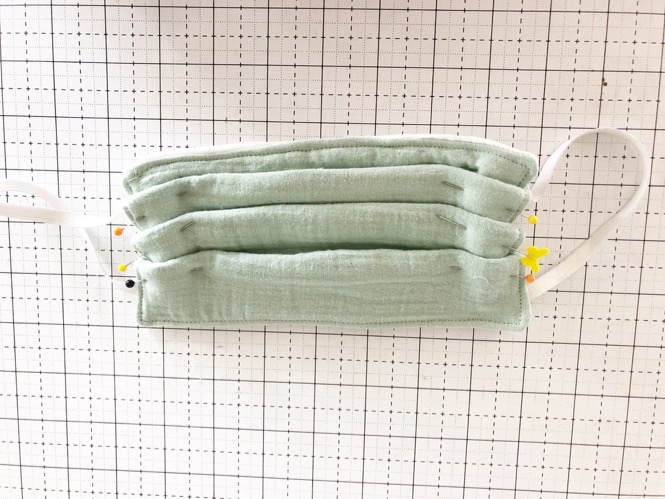 Stitch your pleats down. Pull pins out before you get to them & straighten the edges as they like to shift.
Stitch your pleats down. Pull pins out before you get to them & straighten the edges as they like to shift. 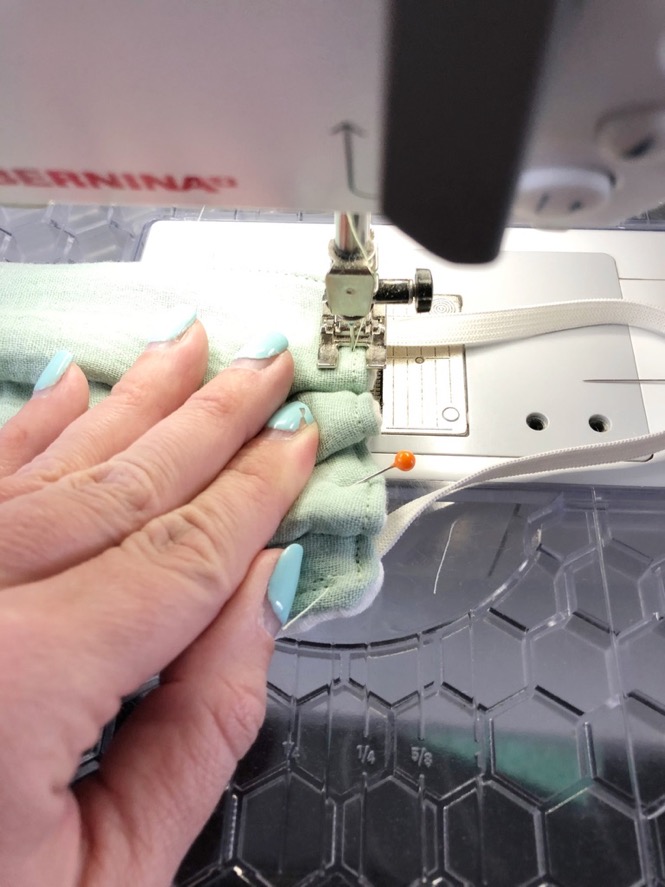 The sides of your mask should look like these stacked waves.
The sides of your mask should look like these stacked waves. 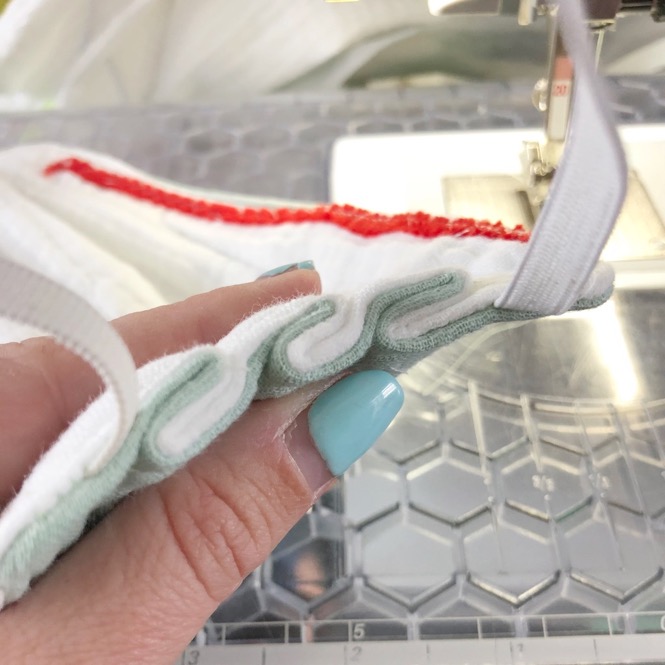 Press the entire mask one more time. Contact your hospital or clinic to see donation procedures. They will NOT want you to go inside.
Press the entire mask one more time. Contact your hospital or clinic to see donation procedures. They will NOT want you to go inside. 
Thank you for helping to meet this need! Every little bit helps & ideally doctors could have enough to switch masks between patients. 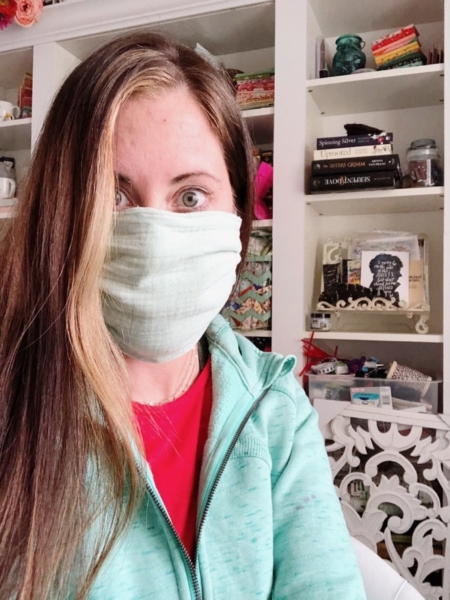

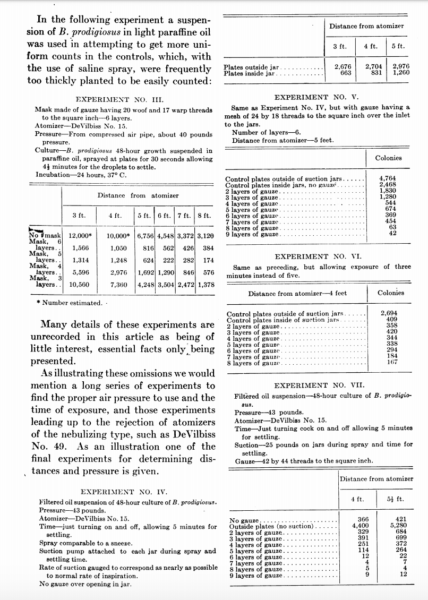
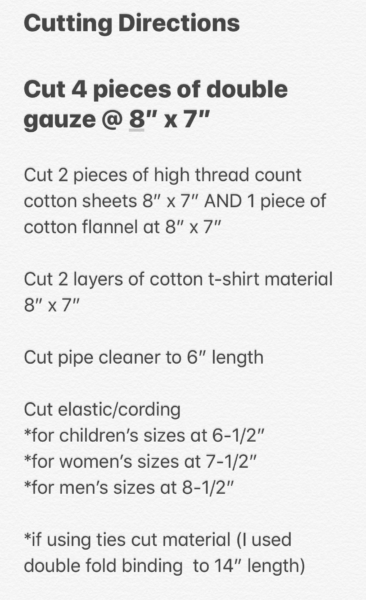
Excellent tutorial, Amanda. Thanks.
Kleenex was invented during WWI as a filtering agent. If nothing else is available, it can be used following the above instructions, best used one time. A tie can be attached instead of elastic.
Im making mine out of incontinence pads i have on hand at home. I have elastic stretch thread that is perfect for around the ears. Ive made mine accordian style and stapled the elastic thread to the mask. Great way not to waste the pads and you get six per pad . i Keep several in my sanitation kit so when i go out if someone needs one i have plenty to share. Ive given out several to my neighborhood.
I’m just getting ready to start sewing and was looking at the hospital list. I live in Tucson AZ but was confused about the 1st hospital listed? The address seems to be odd and I just want to make sure my mailing will get there when ready to send. Could you confirm that address for Mesa AZ? Thanks
Please send masks to Tuba City AZ They tank 13 th in the world for cases. Address 167 Main Street Tuba City AZ 86045. They are desperate
Contact Mending Souls at 520 437-6007 or Cathey’sSewing and Vacuum, here in Tucson, AZ. Mending Souls is working with local hospitals that provide the fabric. Mon., Wed., Friday they are at the Tucson Mall, food court section at 3 P.M. They provide the kits and/or materials. Sew, cut or both. Many hands make light work!
Did they test with using fusible interfacing to line both insides? Its much more tighter weave and still breathable than gauze fabric. Ive been making these with tighter weave cotton and fusible interfacing on the inside.
I would love to know the answer to this question. I’ve got all my fabric including the fusible interfacing and DuPont Tyvek 105gm to use as filter material. Please provide your recommendations. Thank you.
Will yo;u email me the directions
I am looking to make some masks and just purchased woven quilting cotton to do so. I own an apparel business and use cotton/tencel knit to make t shirts. Would that be a better fabric?
I am a hospice crisis care nurse. I am in dire need of some masks equal filtering as an N95. I have looked at many patterns and instructions and quite frankly getting very exasperated! Could someone please help me to give me easy instruction for making some masks ? I ordered some gauze material then read not a good barrier. Please advise me asap to wear by next week. Thank you in advance
My husband is a biologist and he’s working with my nurse sister & her co-workers and our seamstress friend. They’ve found vacuum bags will work and other items. I’m not medical, science or crafty, just assisting in compiling and sharing info. I can email you info if you like.
ENT on news said that Vacuum bags are NOT good because they are treated and you would be inhaling those is your throat.
I read that shop rags ( the blue ones) are good, they have a higher filter rate
I would love to have the pattern and materials needed for the masks for myself and my sister. We both are disabled senior citizens and we both have copd. I would greatly appreciate your help. Thank you so very much and God bless you 🙏
In Nebraska, they are preparing to wear some of the home-made masks OVER the N95 masks, so that the N95 can be worn longer.
I live in Albany, Ga. They have been making the covers to wear over the N95 for weeks now. We had a huge outbreak and I know that they made over 20,000 that first week and they would change out the covers several times while they work and those covers are washed so they could use one N95 per shift. I don’t think they used the N95 more than one shift. That would be perfect for someone to do if they have only one N95 mask.
Stay Safe.
Look at: https://today.tamu.edu/2020/03/30/aggie-engineers-create-step-by-step-method-for-making-protective-medical-masks/
Texas A&M engineers have developed a mask using air filter Merv-13 rated, sheer curtain, staples, cord. We’re planning on making a bunch soon as our Merv-13 air filters arrive.
YOU ARE A JEWEL! I cannot sew at all, but I am willing to hand stitch if that is even helpful. These are perfect. Thank you for starting this. We can all help, and you just made it possible for many more.
thank you so much for your efforts to help the healthcare community and mobilize others to do the same, we appreciate you so much! I just want to clarify that these cloth masks are not medical grade and are not being used to prevent the spread of viruses and other airborne materials. Currently, at least in the institution where I work, the cloth masks are being worn over the N95 respirators (which are scientifically-proven and approved by CDC, NIOSH, and OSHA). The intention as of right now is to preserve these N95 masks and extend their use for as long as possible. The cloth masks offer little to no protection to healthcare providers, who generally get up close and personal to contagious individuals. According to the CDC, cloth masks are not preferred and are the last resort. The article you shared was from 1920 when masks were not regulated and tested to the same degree (if at all) as they are now. Plus, we have gotten much more savvy in learning about and preventing harmful pathogens and, as we are seeing in 2020, these pathogens are getting more savvy too!
Sorry for the rant, just wanting to offer some unsolicited information to you and your visitors.
Great tutorial…thank you
Hi! Something I wanted to clarify – is there an order in which we should be placing the outer layers? More open weave on the outside to tighter weave on the inside? Evenly distributed?
Thanks!
I used 19″ x 14″ prefolded cloth baby diapers with double in middle. Worked perfectly. No need to use layers as they are there already. Washable and dryable. Can cut out 3 masks out of one diaper.
That’s a wonderful idea! Please tell me which diapers you use and if you used a different pattern than the one above? I can’t wait to make these for my local, rural Hospital!
Great idea. How would cheese cloth do for the lining?
These are better than no masks at all….. that seems to be the point! I for one am grateful to have these, way better than surgical masks!!!!!!!!! Be grateful you have n95s, we don’t!
I have some muslin baby receiving blankets that are 100% cotton. Can I use those as the cotton gauze?
I’m putting hepa filters between the materials. It works good.
I want to add a hepa filter from a furnace filter (new of course). Can I sew it between my fabric or do I have to put it into a pocket so it can be removed when mask is washed?
Thanks in advance. M
What is the study you sited as gauze being effective?
Thank you for this pattern.
I have a friend who is a nurse and i am making them for her.
Could you please cite the periodical and date of the research you referred to in your post? Is it current?
I am so confused with all of the different comments. What exactly needs to be put in the masks to ensure they are compliant and safe to use against the virus? I am hoping to make some, but not sure what to use as a filter.
Great idea. Thank you!!
Hi,
Just checking if you use bleached or unbleached gauze?
I wondered if a coffee filter as a middle layer would help?
So, your machine must be much … more powerful than mine (Baby Lock Destiny) and I can’t sew thought the pleats. What did you do? What can I do?
Is it ok to use 2 layers of a 100% cotton t-shirt for outer layer and 100% cotton flannel for a liner? I don’t have sheets or pillow cases available.
You know what might make a great mask? I use these blue “shop towels” which are heavy-duty polishing-type paper towels. They are rather finely textured and very soft. They have no odor. I use them all the time, for all kinds of things.
I’m going to fiddle with some, see how it goes.
I have a bag of menstrual pads that I no longer require….just left over post-menopause. Would the filling in those be likely to help as a filter?
How about using, recycled grocery bag in middle?
Do you have pattern for the found masks. I am a vet tech as well as EMT and want to make them.for coworkers.
For the inside of the mask how about using the garden material that we wrap around our outdoor plants in winter to protect them? It is non-woven and should provide something of a barrier and it would be comfortable against the skin.
I’ve read that that product doesn’t work. You have to be able to breathe through the mask. I think it also had something unhealthy in it. They said Pellon non woven interfacing, the fusible kind or regular non fusible filter better. There is also something called Oly Fun that was good. The style that is curved (looks like a bra cup folded in half) fits the face better without gaps. I’m making that kind now. Good luck.